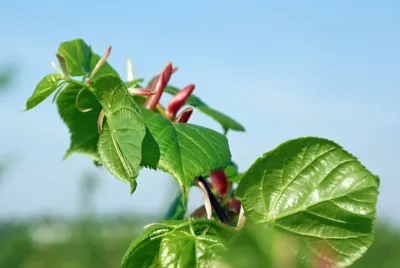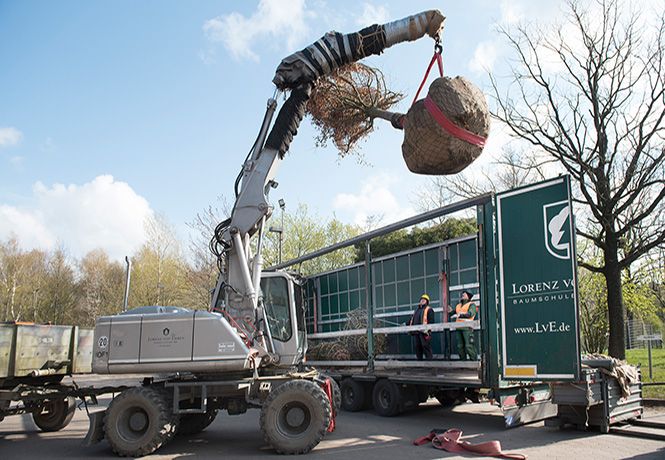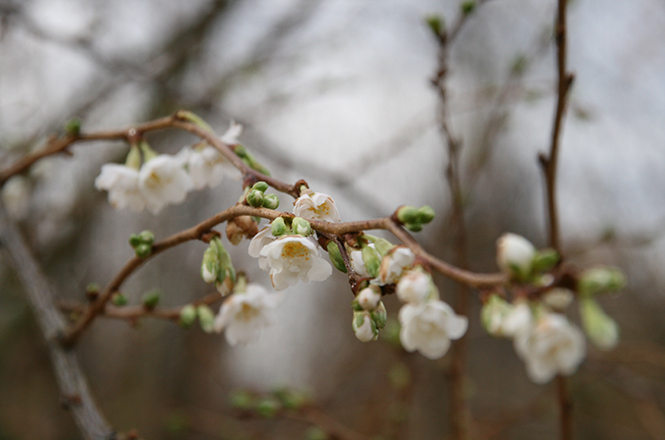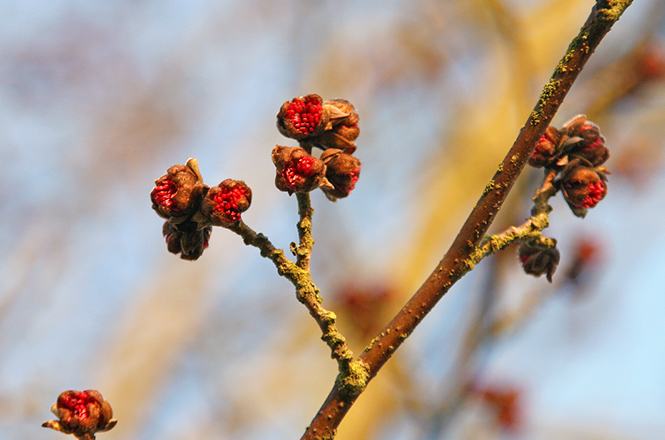
Winter-flowering trees and shrubs!
Highlights in the dark season!
When winter arrives and nature goes into a dormant phase, winter-flowering shrubs can be real highlights in the garden. They not only bring color into the gray season, but also a bit of liveliness. Plants such as winter cherry (Prunus subhirtella 'Autumnalis'), winter jasmine (Jasminum nudiflorum) or witch hazel (Hamamelis) bloom when most other plants are dormant.

"Winter-flowering shrubs can be used to create an atmosphere that brings joy even in the cold season and awakens the anticipation of spring."
Melanie Graf, Tree gardener, Hamburg, Lorenz von Ehren Nursery
Our uniques
Unter unseren Unikaten finden Sie gleich mehrere Parrotia persica. Alle in untereschiedlichen Formen! Take a look at our uniques!
Did you know?
These woody plants are not only visually appealing, but also provide valuable food sources for insects that are out and about on mild winter days. They are also often easy to care for and robust, making them ideal companions for any garden.
FAQ - Frequently asked questions
Winter bloomers have many benefits
They fill a gap in the food calendar as an important food source for insects, especially for early-active pollinators such as bees and bumblebees. Many insects are also active in winter or on mild days and need nectar and pollen to survive
They provide colourful accents in the often dreary winter period and can bring gardens to life long before other plants bloom. They signal the transition from winter to spring and increase the attractiveness of parks and gardens. For many people, the sight of flowering plants in winter is a mood booster. The colours and vitality of the flowers are a reminder that spring is approaching and have a positive effect on the psyche.
Caring for winter-flowering shrubs
1. Most winter-flowering shrubs prefer a sunny to semi-shady location. They should be sheltered from the wind, as frost and icy winds can damage sensitive flowers. A position against a house wall or near other protective plants is ideal.
2. Winter bloomers thrive best in well-drained, humus-rich soil. Waterlogging should be avoided at all costs as it damages the roots. If the soil is heavy and clayey, it is advisable to work in sand or compost to improve permeability.
3. Even in winter, winter-flowering shrubs need water in dry weather, especially if there is no snow. The soil should be watered lightly on frost-free days.
4. In spring, after flowering, fertilisation is advisable to supply the woody plants with important nutrients. An organic fertiliser such as compost or horn shavings promotes growth and flower formation in the following winter.Fertilisation should be avoided during the flowering period in winter.
5. Regular pruning is not usually necessary for winter-flowering shrubs, as they naturally have an attractive growth habit. However, if corrections are necessary, pruning should be carried out immediately after flowering in spring. This prevents buds that have already formed from being removed for the next season.
6. Winter-flowering shrubs are generally frost-hardy, but young plants and more sensitive species such as camellia (Camellia japonica) require additional protection in harsh winters.A layer of mulch or brushwood protects the roots from frost. In extreme temperatures, a fleece can protect the branches and buds.
Are there winter-flowering shrubs that are fragrant?
In addition to their colourful flowers, many ornamental shrubs that flower in winter also have a striking fragrance. These include, for example, the two snowball species Viburnum farreri and Vibuirnum x bodnatense ‘Dawn’, also known as winter snowball because of its pretty, pink-coloured flowers, which give off an intense fragrance as early as November. It usually takes a short break afterwards and is then in full bloom in March.

Contact
Melanie Graf
Tree gardener
Fon: +49 (0) 40 7681 -0
email: LvE(at)LvE.de
































